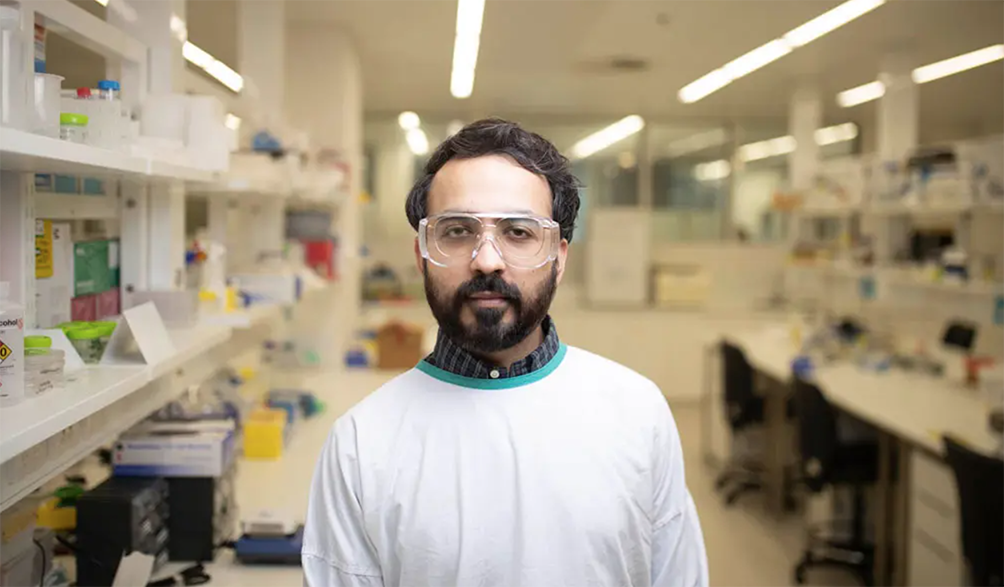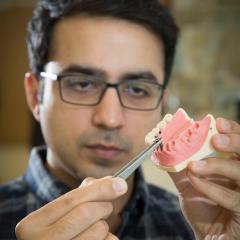New research by Dr Karan Gulati may lead to a solution to the problem of dental implant failure.
 While we’re aware of the risk factors for implant failure, a lot of work has focused on optimising conditions for success in each patient’s mouth. Which, when you think about it, is like solving a problem with a car by fixing the road. Surely it would make more sense to develop a cost-effective way of fixing each individual implant. Dr Karan Gulati, NHMRC Early Career Fellow from the UQ School of Dentistry, may have done just that.
While we’re aware of the risk factors for implant failure, a lot of work has focused on optimising conditions for success in each patient’s mouth. Which, when you think about it, is like solving a problem with a car by fixing the road. Surely it would make more sense to develop a cost-effective way of fixing each individual implant. Dr Karan Gulati, NHMRC Early Career Fellow from the UQ School of Dentistry, may have done just that.
The success rate of implants in healthy patients is between 90 and 95 per cent. “But when we are talking about compromised conditions such as diabetes, osteoporosis, aged patients, or smokers, the success rate drops—for instance with smoking, the success rate can be as low as around 80 per cent,” says Dr Gulati.
The problem is the race to invade. “There is a race to invade between the different cells at the site of implant when we implant anything that is foreign to the human body,” he explains. “The type of cells which adhere and colonise the site of implantation first dictates the success/failure of the implant and the extent of integration.”
Read more in this interview with Bite magazine, where Dr Gulati outlines his recently published proof-of-concept paper that demonstrates a cheap and easy way of modifying the surface of an implant.




